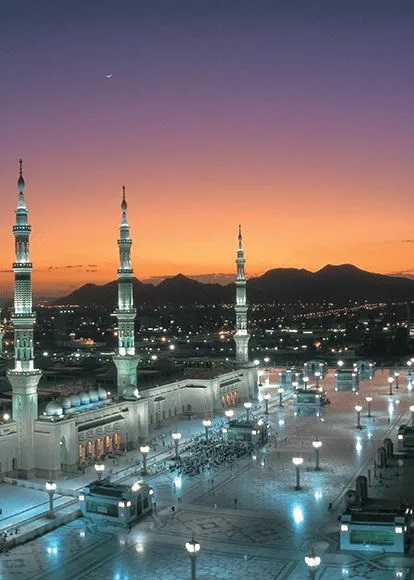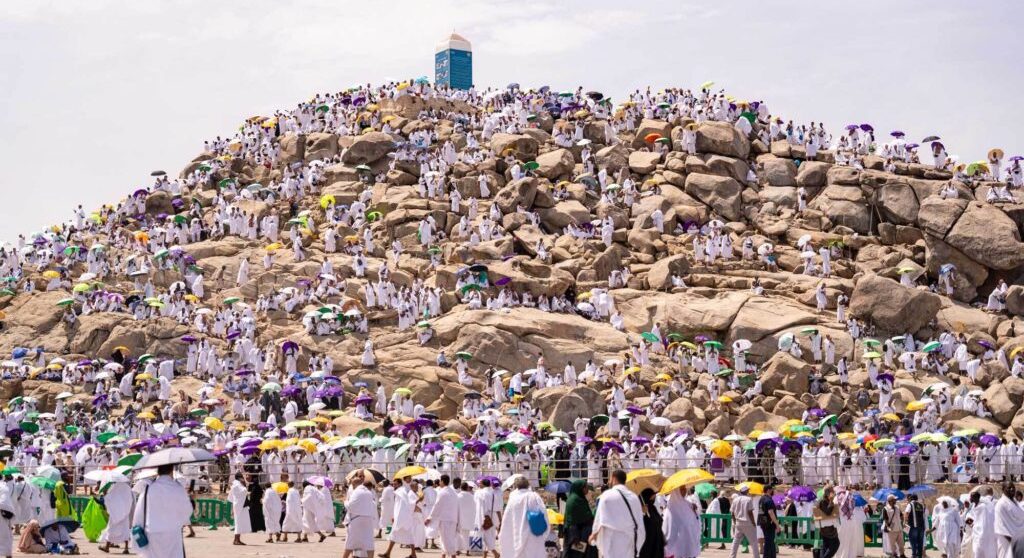Understanding Ziyarat Routes of Saudi Arabia
Saudi Arabia is a light of devotion and spirituality in the center of the Islamic world. The significant journey known as Ziyarat, a holy pilgrimage that links believers with the rich heritage of Islam, is undertaken by pilgrims from all over the world.
Showing Ziyarat’s True Nature
The Arabic word ziyarat means “visit” or “journey.” It has a unique meaning in Islamic traditions, denoting a trip made to sacred locations connected to the Prophet Muhammad and other renowned personalities. With its rich historical heritage, the Kingdom of Saudi Arabia is home to numerous Ziyarat routes that attract believers in faith.
The Spiritual Landscape of Saudi Arabia
Saudi Arabia, home to the two holiest cities in Islam, Mecca, and Medina, boasts a spiritual landscape that resonates with the essence of Ziyarat. Pilgrims navigate through a network of routes that connect significant historical and religious sites, providing a profound experience of devotion and reflection.
Exploring the Ziyarat Routes
Tracing the Prophet’s Footsteps
The city of Medina, the second holiest site in Islam, is a pivotal destination for Ziyarat. Pilgrims embark on a spiritual journey, retracing the footsteps of the Prophet Muhammad. The Quba Mosque, the first mosque built by the Prophet, and the Qiblatain Mosque, where the direction of prayer changed, are integral stops on this sacred route.
Kaaba and Beyond
Central to the Ziyarat experience is Mecca, the holiest city in Islam. In order to totally lose themselves in the spiritual spirit flowing from the Kaaba, the blessed building at the center of the Masjid al-Haram, visitors walk around it. Beyond the Kaaba, the Ziyarat paths in Mecca include significant locations like the Cave of Hira, the site of the earliest visions of the Quran.
The Journey to Uhud
Uhud, a mountain range near Medina, holds historical significance in Islamic lore. Pilgrims follow the Ziyarat route to Uhud to commemorate the Battle of Uhud, a crucial event in early Islamic history. The Uhud Martyrs Cemetery and the Prophet’s Mosque in Quba are integral stops on this route, allowing pilgrims to connect with the sacrifices made by early Muslims.
The Peaceful Ziyarat to Jannat al-Mu’alla
Jannat al-Mu’alla, the famous cemetery in Mecca, is a serene Ziyarat destination where pilgrims pay respects to the departed souls, including close family members of the Prophet Muhammad. This holy tomb serves as a moving reminder of both the passing basic terms of life and the unbreakable oneness of the Islamic community.
The Rituals of Ziyarat
Ziyarat is not merely a physical journey; it involves a series of rituals that deepen the spiritual connection between the pilgrim and the sacred sites. Tawaf, the circumambulation of the Kaaba, and Salat at specific locations are integral components of the Ziyarat experience. These rituals symbolize submission, gratitude, and a profound connection with the divine.
Logistics and Practicalities
Planning Your Ziyarat Journey
Embarking on a Ziyarat journey requires meticulous planning. Pilgrims should create a detailed itinerary, considering the specific sites they intend to visit, the duration of their stay, and the logistics involved in traveling between locations. Booking accommodations in advance and understanding the local customs and regulations are crucial aspects of the planning process.
Transportation
Saudi Arabia offers a well-developed transportation infrastructure to facilitate Ziyarat journeys. Pilgrims can choose from various modes of transportation, including buses, taxis, and private vehicles. Various Taxi Makkah services are in front in this case. It’s essential to familiarize oneself with the transportation options available and plan the journey to optimize time and minimize logistical challenges.
Accommodations
Selecting suitable accommodations is a key consideration for Ziyarat pilgrims. From hotels in close proximity to the holy sites to more secluded options for contemplation, a range of choices cater to diverse preferences. Booking accommodations in advance ensures a comfortable and spiritually enriching experience.

The Spiritual Impact of Ziyarat
Ziyarat is a life-changing experience that deeply impacts the pilgrim’s spirit, it is more than just a travel. A strong bond with Islamic tradition is created via prayer recitation, historical reflection, and absorption in holy places. After their Ziyarat journey, travelers frequently come away from it with a stronger feeling of faith, an improved understanding of Islamic history, and a closer connection to the Muslim community around the world.
Challenges and Solutions
Ziyarat is a life-changing event, but maintaining the holy status of these blessed locations is difficult. Careful thought must be given to the growing number of pilgrims, urban growth, and environmental issues. Ensuring that future generations can continue to undertake this spiritual trip depends on sustainable tourism practices, preservation measures, and appropriate pilgrimage conduct.
Balancing Spiritual Needs and Environmental Responsibility
Responsible tourism practices are becoming more and more important as the number of people visiting Ziyarat rises. It is a difficult try to strike a balance between pilgrims’ spiritual needs and environmental responsibility. Waste minimization, energy conservation, and community involvement are some of the initiatives that help keep the places sacred for future generations.
Safeguarding Historical and Cultural Traditions
Many of the Ziyarat sites hold huge historical and cultural significance. Preservation initiatives are essential to safeguarding the architectural, artistic, and historical heritage of these locations. Collaborative efforts between religious authorities, government bodies, and local communities can ensure that the purity of the sites is maintained while accommodating the spiritual needs of pilgrims.
Ziyarat in the Modern Age
In the present era, technology is essential to improving the Ziyarat experience. Pilgrims can access historical context, current crowd situations, and useful information using mobile applications, virtual reality, and interactive tours. With the aid of these technical advancements, pilgrims can more easily cross the spiritual terrain and maximize their religious journey.
Mobile Applications
In the age of smartphones, mobile applications offer a wealth of information for Ziyarat pilgrims. These apps provide maps, historical insights, prayer times, and essential logistical details. Pilgrims can use these tools to enhance their understanding of the sites and streamline their journey, ensuring a smoother and more meaningful experience. You can also hire a Taxi service using this.
Bridging the Gap Between Past and Present
Through the use of virtual reality (VR) technology, Ziyarat may now be experienced from any location in the world. Through virtual reality applications, users can virtually explore hallowed sites and get insight into the spiritual and historical value of each site. This technical advancement makes it possible to connect spiritually and physically.
The Ziyarat roads connect followers of Islam with its historical roots in the center of Saudi Arabia. Pilgrims set out on a trip that goes beyond the material world as they make their way across the spiritual landscape of Medina, Mecca, Uhud, and beyond. Ziyarat is a soul journey, a holy odyssey that promotes spiritual development, unity, and a close relationship with God. Ziyarat invites the faithful to walk the path of knowledge and devotion in the footsteps of prophets and martyrs, creating a lasting connection with the rich legacy of Islam.


